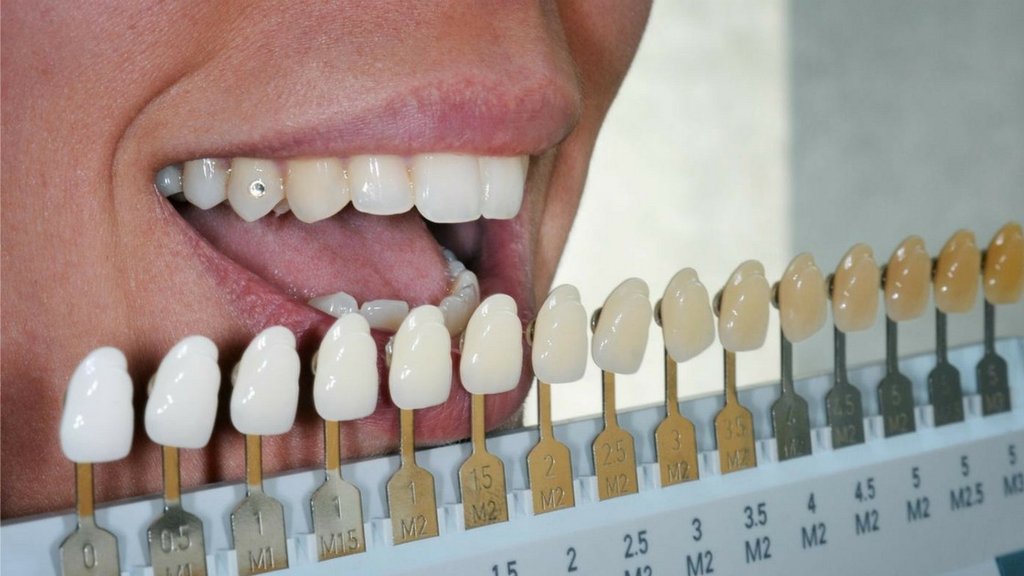There’s no one standard system in the dental field to measure and determine tooth color. Nor is there an exact answer to how white your teeth can become-every person’s situation is unique. One commonly used reference tool, however, is a shade guide.
One of the more common shade guides divides tooth color into four basic shade ranges:
A (reddish brown)
B (reddish yellow)
C (gray)
D (reddish gray)
Within each range are different levels of darkness — which results in a chart detailed enough for almost everyone to find their exact tooth color on the guide.
To use such a guide, simply match your current tooth color to the corresponding color on the chart. This gives you a starting point as you determine how much whiter you’d like your teeth to be.
How white should your teeth become? That depends.
There’s no one right way to whiten your teeth. Some people want an instant and dramatic change, while others prefer more gradual whitening such as the type that results from a whitening toothpaste or gel. Final results depend on your natural tooth color, how stubborn any stains are and the treatment you choose. Keep in mind that:
A change of just two or three shades can make a noticeable difference in just about anyone’s smile
While whitening can occasionally change tooth color nine or more shades, the majority of people who whiten their teeth see a change of between two and seven shades
Each procedure has its advantages and disadvantages. Laser whitening and other in-office bleaching procedures, for example, may produce the most dramatic results, but cost significantly more


